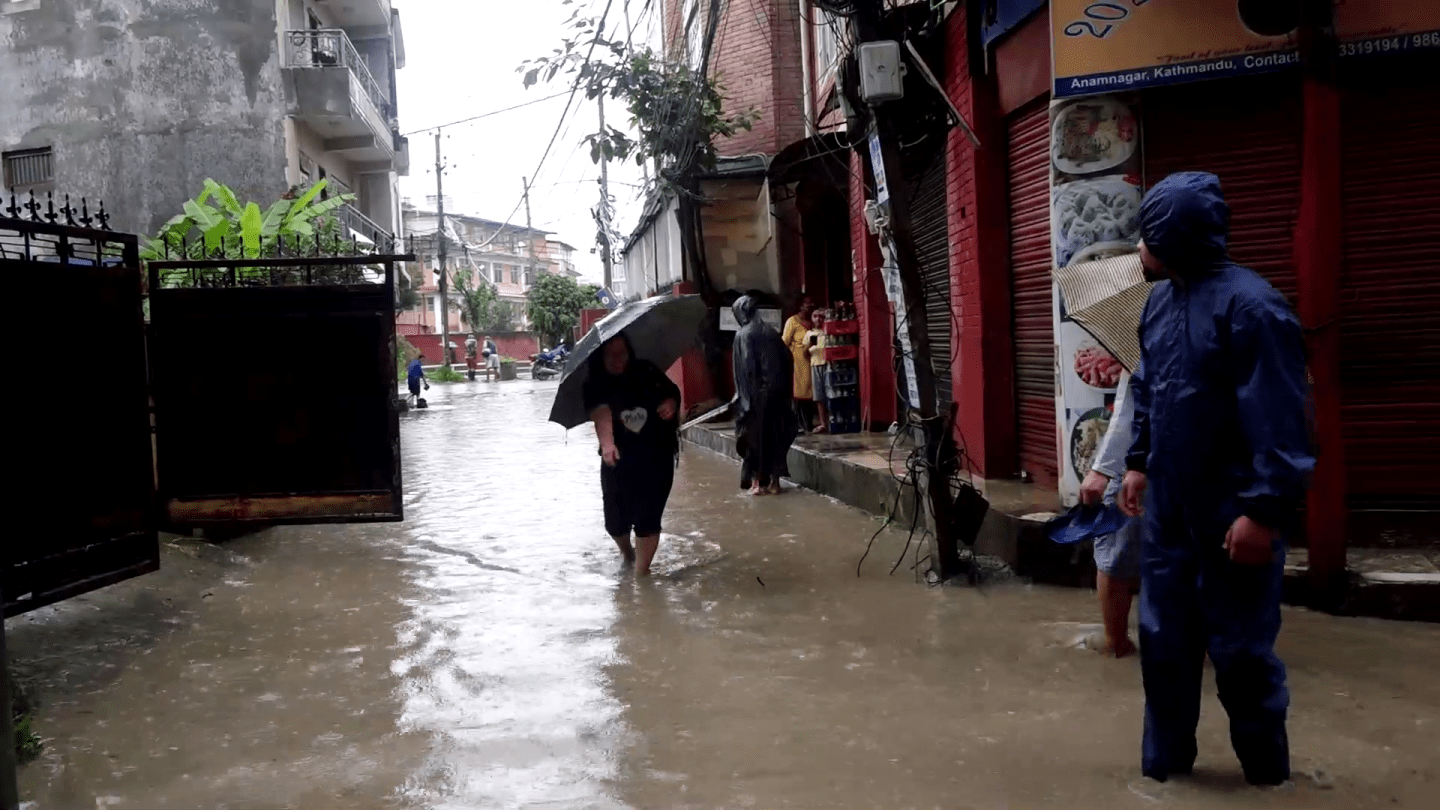KATHMANDU: On the night of September 3 last week, the cloudburst flooded rivers and streams in the Kathmandu Valley, causing inundation in numerous settlements on riverbanks and low-lying areas. ‘
The rivers as Bagmati, Bishnumati, and Manohara and rivulet as Dhobikhola and several streams took a toll on Kathmandu people.
The media reported that the pig and poultry farmers on the Manohara riverbank were hit hard with the inundation. Similarly, the squatter dwellers on the banks of the Bagmati River faced a miserable situation.
It was horrible to see the streams at Kapan, Kathmandu gushed back into drainpipes, thereby waterlogging the first floors of the houses close to streams. Kapan area was largely a beautiful paddy field until two decades back. Now, it has turned into a place as stifling as Asan and Indrachowk.
Some Kathmanduites said such a downpour was first in 25 years and some said it was the first in 40 years. Anyway, the downpour clearly showed how poor the urban planning and management is in Kathmandu city, the federal capital of Nepal.
Dream city turns chaotic city
Needless to say, for many, Kathmandu city is the dream city. But, the hassles and difficulties at every step has turned it into a chaotic city for some years.
Overpopulation is already a sheer problem in the valley.
It has resulted in the shortage of drinking water, haphazard construction of infrastructures, lack of open spaces and a sharp decline in vegetation, mad traffic congestion, narrow and bending roadways, encroachment upon public places including rivers and streams, poor garbage management to mention some. Once the separate conurbations- Kathmandu, Lalitpur, and Bhaktapur cities are now a single city with no space left open to separate them.
For nearly a month, the piles of garbage littered the Kathmandu Valley. The collection of valley garbage is yet to be intensified. The obstruction to reach the waste to a new landfill site, Bancharedanda, was caused by a road blockade with landslides. The rainfall triggered the landslide.
Another severe problem the Kathmandu Valley people will be facing in the dry season is drinking water after the devastation caused to the Melamchi Drinking Water Project by the floods in the Melamchi River of Sindhupalchowk district two months back. A detailed study is awaited to ascertain the humongous loss.
Moreover, it is worth mentioning that at the end of March early this year, the Kathmandu Valley was blanketed with smog. The smog was quite an irritant that people complained of problems in eyes and breathing. The meteorologists had then reasoned the wildfire at several places across the country for the valley smog. Luckily, the Kathmandu Valley got rid of the polluted air in a week.
Remembering some years back- during the time of the 2015 Gorkha Earthquake, one of the most coveted things was ‘open space’ in the Kathmandu Valley. The dwellers in the jungle of concrete were forced to desert their houses and run out with some chattels to secure a safe public place. People were crowded at Tundikhel and inside Singha Durbar. Some even spent nights on footpaths.
In this connection, one should applaud the initiative taken by then prime minister Dr Baburam Bhattarai to widen the Kathmandu Valley roads. Despite hurdles, the broad road drive is still continuous in suburbs. It has given relief, but effacing footpath while broadening road at some places is worrying.
Another good initiative is the Bagmati River clean-up campaign which was voluntarily extended further to clean other rivers and streams. The campaign has been continued till date- though at a minimum scale of late. One may wonder how littered the valley rivers and streams would be if the campaign was halted in the middle. However, picking trashes is not enough to clean the rivers and streams as they are already changed into the drainpipes.
The abovementioned malaises are so pressing that they have dented basic human rights. It is not unwise for anyone living in the biggest city of the country to aspire a better life with safety, comfort, convenience, and luxury. But at a time when city dwellers are deprived of even the basic rights, how can their aspiration for a livable Kathmandu city be realized?
Urban planning a regressive thought?
About the Kathmandu Valley flash flood triggered by the downpour last week, former minister Dr Prakash Chandra Lohani, took to Twitter and reminded, “It was the 2040s (BS), I was the Minister for Urban Development for some months. A comprehensive plan was formulated for the urban development of Kathmandu Valley.
As per the plan, 50 meters of land had to be left open on each side of major rivers in Kathmandu. In this land, tree plantation was mandatory. The aim of the plan was to control the soil erosion by the rivers and maintain the city ecosystem and beauty.
This rule was however termed ‘regressive’ thoughts and canceled after 2046BS. Nature after all did not tolerate. People are facing inundation and huge losses now. Still, we have time.”
Isn’t it high time all concerned stakeholders paid heed to make Kathmandu city a better, livable city?
(RSS)









Comment